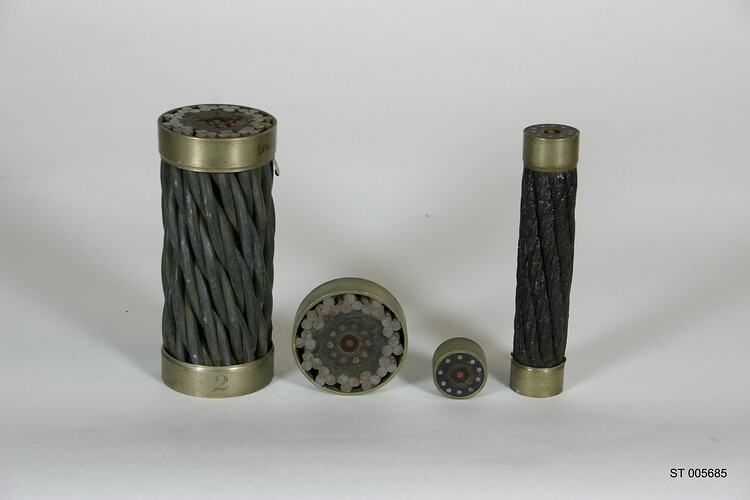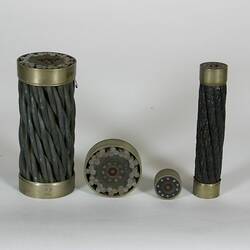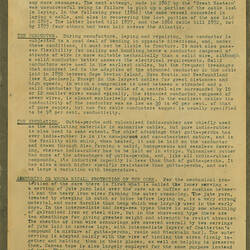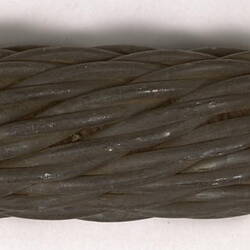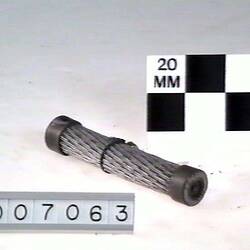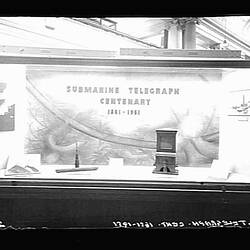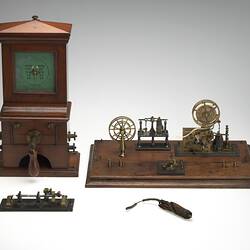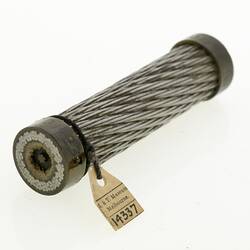Summary
Four sections of the Atlantic Submarine Telegraph cable laid in 1865. The length of the cable was about 2300 nautical miles.
The four objects include two sections of the main cable and two sections of the shore end of the cable. The shore end is more heavily armoured than the main cable because of the greater possibility of damage close to shore by, for example, wave action or anchors. The cable consisted of a central conductor surrounded by a layer of insulation and an outer protective covering of armouring wires.
The first attempt to lay a trans-Atlantic submarine telegraph cable took place in 1857 but failed when the cable broke after about 330 nautical miles had been laid. A second attempt in 1858 was successful but the cable operated for only about a month before failing.
In 1865 another attempt to lay a trans-Atlantic cable of improved design failed. Finally, in 1866 a cable was successfully laid. In addition, the 1865 cable was retrieved, repaired and completed so that there were two cables in operation by the end of 1866.
The donor of these items was the Telegraph Construction & Maintenance Co, London, England, who manufactured the 1865 cable. The Telegraph Construction & Maintenance Co was formed in 1864 and dominated the manufacture of submarine telegraph equipment for the next century. It was involved in the laying of the early Atlantic cables, but not the first. The Company was formed by the merger of the Gutta Percha Company and Glass, Elliott & Company. These were two of the companies who were involved in the laying of the first Atlantic cable.
Physical Description
Four objects including a length and cross-section of the main cable and a length and cross-section of the shore end of the cable. Each cable length is fitted with a metal band at each end.
Significance
These cable sections are unused samples of the cable used in the first long term telegraphic connection across the Atlantic Ocean. The cable became operational in 1865.
More Information
-
Collection Names
-
Collecting Areas
-
Acquisition Information
Donation from Telegraph Construction & Maintenance Co
-
Manufacturer
Telegraph Construction & Maintenance Co, London, England, Great Britain, circa 1865
-
Classification
-
Category
-
Discipline
-
Type of item
-
References
"The Atlantic Telegraph", by W. H. Russell, first published in 1866, republished in 2005 by Nonsuch Publishing Ltd.
-
Keywords
